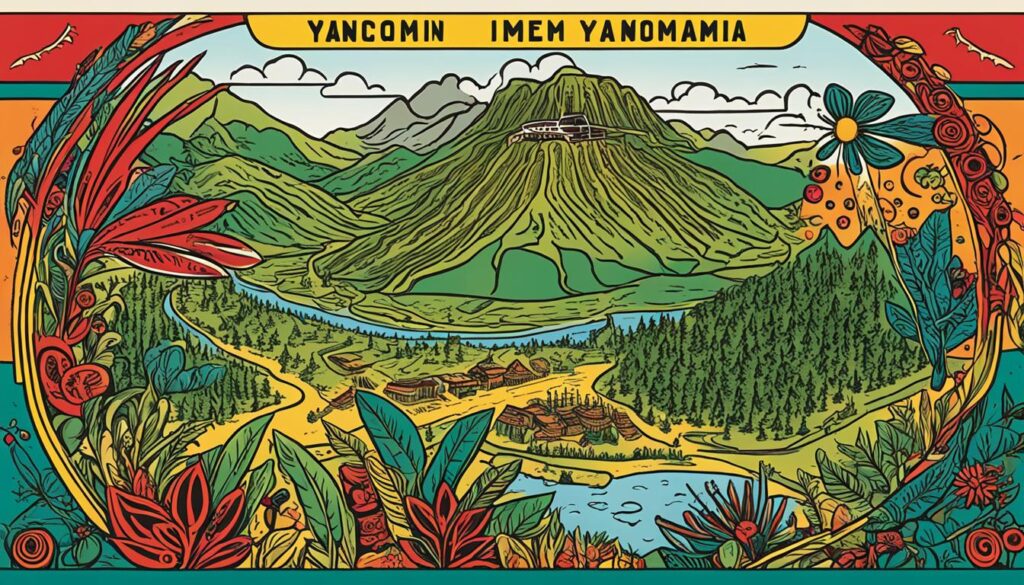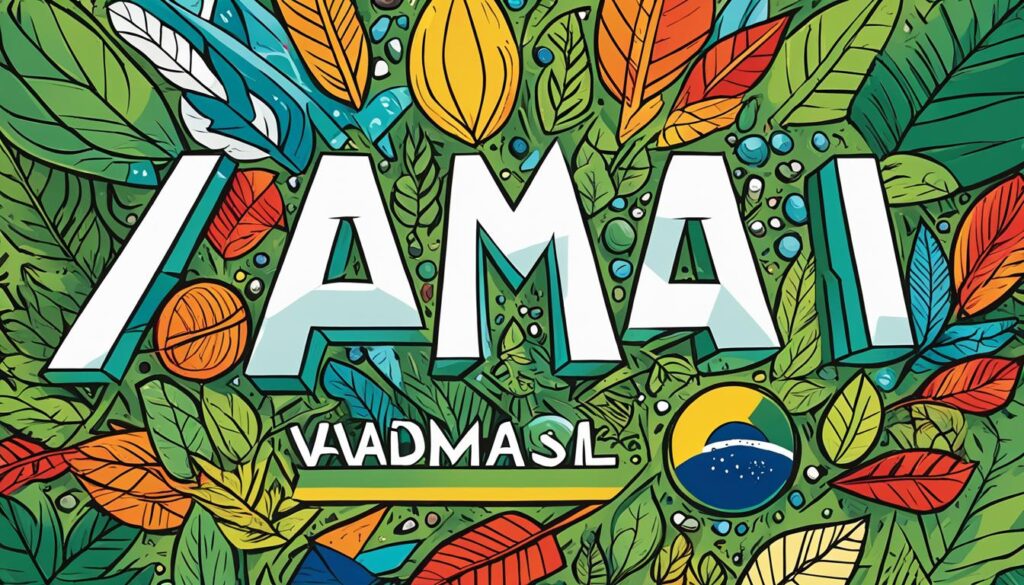Did you know that the Yanomámi language, spoken by the Yanomami people in southern Venezuela and northwestern Brazil, is part of one of the primary language families in the world? This indigenous language, also known as the Yanomami tribe language, is a vibrant thread woven into the fabric of the Amazon’s indigenous heritage. With its unique history, preservation efforts, and cultural significance, the Yanomámi language is a fascinating subject that offers a glimpse into the rich and diverse linguistic landscape of the Amazonian region.
From its distribution and subdivisions to its phonological and syntactical characteristics, this article delves into the depth and complexity of the Yanomámi language. We will explore its genetic relations and language contact, as well as variations in name and spelling. Join us on this linguistic journey as we uncover the fascinating nuances of the Yanomámi language and its importance in preserving the cultural heritage of the Yanomami tribe.
Yanomámi Language Distribution and Subdivisions
The Yanomámi language is mainly spoken in the Orinoco-Mavaca and Amazonas regions of Brazil. It is divided into four primary branches, each with its own distinct dialects:
- Yanomam Branch: This branch includes dialects spoken in the Rio Uraricoera, Parima, Upper Mucajaí, Catrimani, and Toototobi areas.
- Ninam-Yanomam-Yaroamë Branch: Dialects in this branch are spoken in the Rio Uraricaá and Middle Mucajaí regions.
- Sanumá Branch: This branch is primarily spoken in the Rio Auaris area.
- Yãnoma: This branch constitutes another subdivision of the Yanomámi language.
Each branch and its respective dialects have unique characteristics in terms of phonology, lexicon, and morpho-syntactic aspects.
Yanomámi Language Distribution
The Yanomámi language is primarily spoken in the Orinoco-Mavaca and Amazonas regions of Brazil. These areas are home to the Yanomami people, who have preserved their language for generations.
The Yanomámi language serves as a significant means of communication within their communities and helps to preserve their cultural identity. Despite external influences, the Yanomámi people continue to use their native language, which is an integral part of their heritage.
The distribution of the Yanomámi language reflects the geographical range and settlements of the Yanomami people throughout the specified regions.
Yanomámi Language Subdivisions
The Yanomámi language is divided into four main branches, each with its own subdivisions and dialects:
| Branch | Subdivisions | Dialects |
|---|---|---|
| Yanomam | Rio Uraricoera | Dialect 1 |
| Parima | Dialect 2 | |
| Upper Mucajaí | Dialect 3 | |
| Catrimani | Dialect 4 | |
| Toototobi | Dialect 5 | |
| Ninam-Yanomam-Yaroamë | Rio Uraricaá | Dialect 6 |
| Middle Mucajaí | Dialect 7 | |
| – | – | |
| Sanumá | – | – |
| Yãnoma | – | – |
The table above illustrates the subdivisions of the Yanomámi language, including the specific dialects associated with each branch. These subdivisions allow linguists and researchers to study the unique features and variations within the Yanomámi language.
Yanomámi Language Characteristics
The Yanomámi language is characterized by its unique phonological, syntactical, and lexical features. These characteristics play a vital role in shaping the identity and communication of the Yanomami people.
Phonology
One notable feature of Yanomámi phonology is the distinction between oral and nasal vowels. The language has seven basic vowel qualities, each having both oral and nasal counterparts. Additionally, Yanomámi exhibits extensive nasal harmony, where nasalization occurs in vowels following phonetically nasalized vowels. This phonological phenomenon contributes to the distinct sound of the language.
Syntax
Yanomámi is a suffixing language with a predominantly head-marking system. It utilizes elements of dependent-marking to convey grammatical relationships within sentences. Adjectival concepts are expressed through stative verbs, and these adjectival stative verbs typically follow the nouns they modify. This syntax structure adds depth and nuance to the language’s expressive capabilities.
Vocabulary
The vocabulary of the Yanomámi language is diverse and reflective of the natural and cultural environment of the Yanomami people. It encompasses a wide range of terms related to flora, fauna, geographical features, and cultural practices specific to the Amazon rainforest. The richness of the vocabulary allows the Yanomami people to articulate their unique experiences and perspectives.
“The Yanomámi language’s phonological, syntactical, and lexical characteristics contribute to its distinct sound and expressive capabilities.”
Overall, the distinct characteristics of the Yanomámi language, including its phonology, syntax, and vocabulary, shape the unique cultural and linguistic identity of the Yanomami people. These characteristics enable effective communication within the community and serve as a testament to the rich linguistic diversity found in indigenous languages.

| Characteristics | Description |
|---|---|
| Phonology | Distinctive oral and nasal vowels, extensive nasal harmony |
| Syntax | Suffixing language with head-marking elements of dependent-marking, adjectival concepts expressed through stative verbs |
| Vocabulary | Diverse vocabulary reflecting natural and cultural environment |
Yanomámi Language Genetic Relations and Language Contact
The Yanomámi language, while being part of the Yanomaman language family, does not have well-established genetic relations with other language families. Some proposals have suggested possible connections between Yanomaman and Macro-Chibchan or Panoan and Chibchan language families, but these proposals are not widely accepted.
However, the Yanomámi language has had significant language contact with other indigenous language families in the region. This contact has resulted in lexical similarities between Yanomámi and languages such as Irantxe, Taruma, Katukina-Katawixi, Puinave-Kak, Tupi, Arawa, Guahibo, and Jivaro.
| Language Families | Language Contact |
|---|---|
| Irantxe | Lexical similarities |
| Taruma | Lexical similarities |
| Katukina-Katawixi | Lexical similarities |
| Puinave-Kak | Lexical similarities |
| Tupi | Lexical similarities |
| Arawa | Lexical similarities |
| Guahibo | Lexical similarities |
| Jivaro | Lexical similarities |
Quote:
The Yanomámi language, although unique in its genetic relations, has experienced language contact with various indigenous language families in the region, resulting in lexical similarities, enriching the linguistic tapestry of the Amazon.
Yanomámi Language Name and Variations
The term “Yanomami” is not the self-designation used by the Yanomami people. It is a word in their language that means “man” or “human being.” The American anthropologist Napoleon Chagnon adopted this term as an exonym to refer to the culture and people. The pronunciation and spelling of the term vary due to the phonetic differences between English and the Yanomámi language. Some anthropologists use the spelling “Yanomamɨ” to indicate the vowel [ɨ], but the pronunciation and spelling with ⟨i⟩ have become more commonly used.

Yanomámi Language Pronunciation
“The pronunciation of the Yanomámi language varies due to the phonetic differences between English and the native language. Some linguists indicate the use of the vowel [ɨ], while others employ the ⟨i⟩ vowel. Both variations are commonly used to refer to the Yanomámi language.”
Yanomámi Language Spelling
“The spelling of the Yanomámi language has seen some variations, with the inclusion of the ⟨ɨ⟩ vowel to indicate the phonetic sound. However, the spelling with ⟨i⟩ has become more prevalent among scholars and researchers.”
| Exonym | Meaning |
|---|---|
| Yanomami | Man or human being |
Note: The table shows the exonym “Yanomami” commonly used to refer to the Yanomámi language.
Conclusion
The Yanomámi language holds immense significance in the culture and history of the Yanomami tribe. It serves as a testament to the rich linguistic heritage and deep-rooted connection of the Yanomami people to the Amazon rainforest. Through the language’s distribution, subdivisions, characteristics, and genetic relations, we gain valuable insights into the linguistic complexity and diversity of indigenous languages in the region.
Preserving and celebrating the Yanomámi language is vital for the cultural preservation and empowerment of the Yanomami people. By safeguarding their language, they can uphold their identity, traditions, and ancestral knowledge. Moreover, language plays a crucial role in community cohesion and self-expression, allowing the Yanomami people to pass down their stories, values, and indigenous wisdom to future generations.
The Yanomámi language serves as a bridge between past and present, fostering a deep sense of belonging and cultural continuity among the Yanomami people. Recognizing its importance, efforts should be made to support language revitalization initiatives and promote the use of Yanomámi in various domains of daily life. By doing so, we can ensure the language’s continued vibrancy and the preservation of the Yanomami people’s rich cultural heritage.
FAQ
What is the Yanomámi language?
The Yanomámi language is an indigenous language spoken by the Yanomami people in southern Venezuela and northwestern Brazil. It is part of the Yanomaman language family, one of the primary language families in the world.
How many dialects does the Yanomámi language have?
The Yanomámi language has several dialects, including Yanomam, Ninam-Yanomam-Yaroamë, Sanumá, and Yãnoma.
Where is the Yanomámi language primarily spoken?
The Yanomámi language is primarily spoken in the Orinoco-Mavaca and Amazonas regions of Brazil.
What are the characteristics of the Yanomámi language?
The Yanomámi language has unique phonological, syntactical, and lexical characteristics. It is a suffixing language with predominantly head-marking elements of dependent-marking.
Does the Yanomámi language have any genetic relations with other languages?
The Yanomámi language does not have well-established genetic relations with other language families, although it has experienced language contact with other indigenous language families in the region.
What is the significance of the term “Yanomami”?
The term “Yanomami” is not the self-designation used by the Yanomami people. It is a word in their language that means “man” or “human being.”
